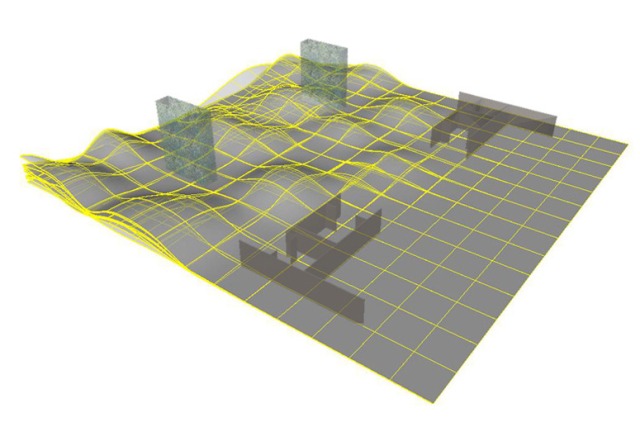2006
Published in
Shinkenchiku 2006:08
Author
- Florian Busch
Related
Language
Berlin-Tokyo | Tokyo-Berlin
Having been displayed at the Mori Art Museum in Tokyo, the exhibition Berlin-Tokyo/Tokyo-Berlin has moved to the New National Gallery in Berlin. While the core works on display are to a great extent the same, anyone who has seen both will soon experience that different questions are asked, or rather, the same questions are asked differently. In essence, it is a meticulously curated documentation of the cultural dialogue between two cities so similar and different at once.
Upon entering, the visitor is led downstairs to an overwhelmingly dense chronology of the past 150 years of mutual exchange in painting, architecture, graphic, photography, film, video, and performance. Occupying the entire 5000 m2 basement level, Berlin-Tokyo shows some 530 works of art, some of which have never left Japan before. The final rooms before going back up are dedicated to contemporary manga and video art.
Our design for the upper hall opens this rather linear tour into a multitude of varying relations between contemporary Tokyo and Berlin. In contrast to the density of the basement, the curators suggested that the upper hall was to show the works of only about a dozen contemporary artists.
Finished in 1968, the New National Gallery is Mies van der Rohe’s last and arguably most ‘Miesian’ work. In this perfect square, placed into an idealised world of Cartesian infinity and separated from its surroundings only by glazed walls, any exhibition design is faced with the immense presence of the grid of roof and floor and the potential of the space’s homogeneous transparency.

From extensive to intensive infinity: Mies’ Cartesian floor plan is becoming a carpet of endless possibilities.
Rather than building walls following or working against this grid, we proposed an exhibition design which would not be a top-down implant but translate Mies’s Cartesian grid into an undulating layer, gradually evolving in response to negotiations between the artists, the curators, and us. In engaging artists and curators early on in the design process, several feedback cycles led to a series of transformations of this layer which dissolved the Miesian absolute space into an exhibition of fluid, active relations.

Frame 0511: The eventually built is but one of a myriad solutions.
The visitors to the exhibition freely wander in a landscape-become-exhibition. As there is not one predefined path but a multitude of unexpected encounters, the exhibition becomes an interactive experience. Moving up and down the hills, perceptions of the artworks change fluidly: The visitor keeps discovering new relations between artists and artworks, between Berlin and Tokyo. During the mere six months between initial concept and opening, the artists’ and curators’ feedback constantly updated digital models until five weeks before the opening, when the geometric constellation was frozen and the data sent for manufacturing. The immediacy of the translation from the digital to the physical blurred the boundaries between scale model and built structure. The 1500 some pieces of the supporting sub-structure were CNC-milled in a few days and formed the basis for a seamless continuity between digital and physical, enabling both speed and high precision during the short 18 days of on-site works.
Perhaps the crucial potential of our design approach lies in its responsiveness: The process enables and challenges all artists to interactively engage with the structure as well as with their neighbours. The artworks’ spatial and temporal dimensions are extended beyond their conventional constraints; the exhibition keeps evolving until the last minute. The eventual outcome, the built structure is a still-frame, a snapshot, representing a moment in an ongoing process of negotiating an exhibition…
FB, Tokyo & Berlin, 2006